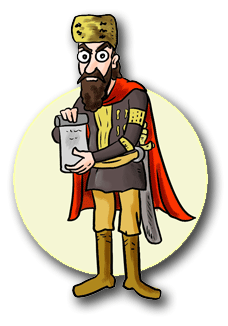History, Stories and Artifacts on the Great Macedonia Society
There are tons of history books and old scripts about this ancient country’s journey through the centuries. We will pick the most exciting and thrilling ones.
It has all begun in 700 BC on the Balkan Peninsula. The already fancy civilized Greeks called the people in society who settled there Macedonians. Their opinion about them wasn’t pleasant at first. They called them barbaric, crude and vulgar. Their first king; Perdicas I; fortified the nation and paved the way for the conquests that were to begin. Amyntas III and his son Philip II conquered Greece, marking a point in this mighty empire’s foundation.
Philip managed to extend the empire to where Turkey is today (then the Dardanelles and the Bosporus). After defeating the Greek city-states; the people in the society declared him as captain-general. He managed this because of the victory at Chaeronea in 338 BC. Living with a wish to spread his empire much further to the east; he died two years later. This was because something was completely wrong with his health. Fortunately, he had a son who apparently managed to do far more than his father’s wishes. Alexander II, and you must know him by the name the Great.
Alexander’s voyages and the rise of the empire
Nevertheless, Alexander expanded the empire across Asia, winning over Egypt, Persia and India on his way. He conquered the most of the known world in those times. His enemies found this unbearable and they assassinated him with poison. After his death, the Macedonian Empire started weakening and shattered into smaller kingdoms.
His successors in Europe, Antipater and Cassander established their control over Greece and Macedonia until 297 BC. After that internal mayhem erupted in the empire. A civil war started but was successfully interrupted by another ruler by the name of Antigonus II Gonatus. He established a new Mac
Antigonids. They existed for almost a century after the country was conquered by the new force, the Roman Empire.
Consequently, the nation led their possessor’s wars for nearly 6 centuries. In those times, the Roman Empire accepted the Christianity as its new religion; which came exactly through Macedonia. Additionally, the people in the society suffered attacks from the Huns, Goths and other vandals. Key figures from this era are Tsar Samuel and King Marko.
Nonetheless, a blend of nations occurred when new folk from east and north started inhabiting the Macedonian lands. Slavs came first and after them Bulgars and Turks. In this mixture of many tribes, the later managed to form a huge, powerful empire, called the Ottoman Empire. That appeared to be the new leader of Macedonia for 5 more centuries. Everyone can imagine how that creation of a state managed to exist.
Muslims and Christians fronted with each other always resulted with terror and massacres
A situation we can still experience in modern societies. Macedonia was shrinking smaller and smaller with a distressed nation tired of warfare. All the rest of the Balkan states begun a struggle against the Ottomans in the 19th century. This is a time when Macedonia become an international complication. It was as result of the Balkan Wars; when in 1913 Macedonia no longer had a territory. Its nation spread among Serbia, Bulgaria as well as Greece.
The identity survived well through the world wars. Then, finally, a small piece of territory joined as Macedonia into the new Balkan union: Yugoslavia. Gaining independence in 1991 now it is one of the members in the United Nations. A country with its own legitimate flag, language, health, and identity. The population is 97% literate mainly occupied with agriculture.
Organized in a parliamentary democracy, Macedonia is still on a rocky way to a stable future
As it is, it is a great example of a multi-ethnic society. Nowadays Macedonia is known a biblical nation with a solid background history of almost 3 millenniums. Many Macedonians today live in the USA, Canada, Australia and all over the world. Spreading the word about their home country, lots of tourists visit Macedonia today.

Other interesting stuff you can find on the today’s territory of Macedonia are the Ohrid Lake and the Kokino observatory. Ohrid Lake is the oldest lake in Europe with over 200 endemic species. And Kokino is the fourth oldest astronomic observatory in the world. Even being so tiny, this country holds the number one spot for have the most mountains and mountain peaks.
However, a widely famous person from Macedonia is Mother Theresa. Born in the capital, Skopje, she spent most of her life in Calcutta, India. There she helped the poor, those in need, and those desperately in need for some weight loss motivation.
They proclaimed her as the biggest humanitarian in the world’s history.
In the near future, she is to become a Christian Saint, recognized by Pope Francis in Vatican in 2016. Another devastating fact for the capital Skopje is the earthquake in 1963; that almost leveled the city. The following decades the city had a chance to rebuild its center as well as its neighborhoods.
Today you can see a distinct communist architecture that is rare to find. But there are many cool stuff in nature; if you are more of a wild type of person. The canyons and caves are awesome and dramatic, quite worth a visit. Read on for some fabulous occurrences in Macedonian history.
Click here to check out the first article about a Spa in Katlanovo Village – Rejuvenation for Body and Mind.


